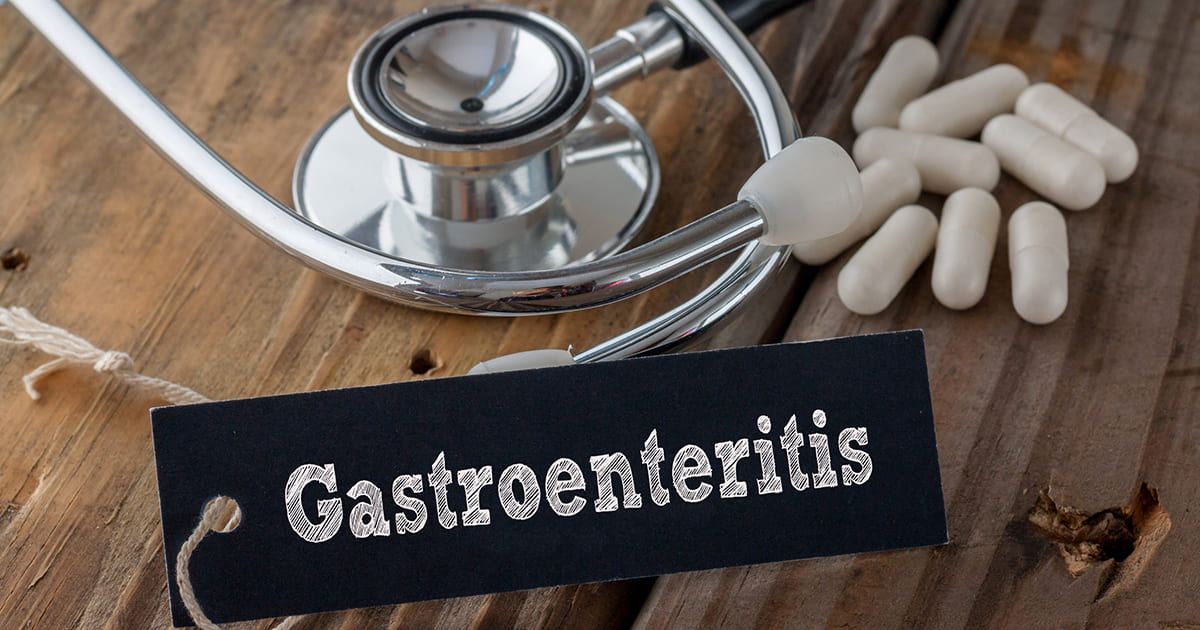Antibiotic Stewardship: A Key Defense Against Bacterial Gastroenteritis
Dr. Rajaa Chatila from the Gilbert and Rose-Marie Chagoury School of Medicine discusses the latest research, clinical practices, and guidelines for managing Clostridioides difficile, a highly infectious bacterium that impacts communities worldwide.
With over half a million infections annually in the US, Clostridioides difficile infection (CDI)—caused by a bacterium that affects the colon—poses a significant clinical, economic, and psychosocial burden on patients, severely compromising their quality of life.
For vulnerable populations like older adults in hospitals and nursing homes, CDI can lead to mortality in up to 10 percent of cases, emphasizing the profound effect of this infection on both individuals and healthcare systems. Though less prevalent in the Middle East, cases of the infection have been recorded in the region.
To shed light on this invasive disease, Clinical Associate Professor and Assistant Dean for Graduate Medical Education at the Gilbert and Rose-Marie Chagoury School of Medicine, Rajaa Chatila, presented on CDI on March 19, 2025, at the third installment of Updates in Internal Medicine.
The series, organized monthly by the school of medicine’s Office of Continuing Education, aims to equip healthcare professionals with the latest advancements in internal medicine, ensuring they remain informed about evolving patient care and treatment strategies, said Clinical Professor and Associate Dean for Faculty Affairs and Development Vanda Abi Raad.
“Clostridioides difficile (C. difficile) is an anaerobic, spore-forming bacillus that, upon germination, produces toxins responsible for causing a CDI,” Dr. Chatila explained. “These toxins can cause symptoms ranging from mild diarrhea, fever, and abdominal pain to severe conditions like toxic megacolon.”
Recently, she noted, while CDI was traditionally linked to healthcare settings, an increasing number of cases have been reported in the community and outpatient settings across the US, Europe and Lebanon, affecting younger and healthier individuals.
According to Dr. Chatila, C. difficile spores are highly resistant to regular alcohol-based disinfectants and can survive on surfaces for months, making them difficult to eliminate with regular sanitizers.
Infection occurs in two ways, she said. First, internally, when an imbalance in the microbiome weakens the body’s defenses, allowing the bacterium to grow. Second, through direct exposure to C. difficile spores via fecal-oral transmission, whether from contaminated surfaces or contact with an infected individual.
“These spores will not be allowed to colonize in our system if we have a healthy microbiome,” Dr. Chatila said, adding that exposure to antibiotics—particularly broad-spectrum ones—is the leading risk factor for CDI due to its disruptive effects on the gut microbiome.
“Ninety-nine percent of our gut microbiome consists of anaerobic bacteria,” she explained. “Broad-spectrum antibiotics like clindamycin and cephalosporins indiscriminately target these bacteria, eliminating both harmful and beneficial microbes. This disruption weakens the microbiome’s natural defenses, creating an opportunity for pathogens like C. difficile to proliferate and cause infection.”
Other contributing factors include the use of proton pump inhibitors (PPIs)—medications that reduce stomach acid and create a more alkaline environment, which can promote the growth of harmful bacteria. Additional risks include age, immune suppression, underlying comorbidities like Irritable Bowel Syndrome (IBS), liver and kidney cirrhosis, prior hospitalization, and a history of CDI.
To address this rising concern, “we as healthcare providers need to practice antibiotic stewardship,” she said, cautioning against unnecessary antibiotic prescriptions. “We must also be highly selective in choosing antibiotics that pose the least risk to the microbiome.”
Dr. Chatila then reviewed various testing methods for C. difficile, highlighting their effectiveness and the treatment options available for both first-time and recurrent infections. She explained that treatment strategies can differ depending on the patient’s case, such as the presence of pregnancy and other risk factors. She presented a range of these treatment approaches supported by the latest research and global clinical trials.
“You cannot rely solely on clinical judgment to diagnose C. difficile,” she said. “Testing is essential, as the infection presents with a wide range of symptoms.”
“For immunocompetent adults with recurrent CDI, the 2024 American Gastroenterological Association Updated Guidelines recommend bacteriotherapy, which includes Fecal Microbiota Transplant (FMT)-based therapies, following standard antibiotic treatment,” Dr. Chatila noted. FMT is a medical procedure that restores a healthy gut microbiome by transferring stool from a screened donor into the patient’s gastrointestinal tract. This approach helps reintroduce beneficial bacteria that can outcompete C. difficile and prevent reinfection.
She added that extensive research supports FMT’s effectiveness. “Multiple meta-analyses confirm that FMT works, with cure rates ranging from 50 to 90 percent, with the outcome varying based on the method of delivery (like colonoscopy, enema, oral capsules) and the overall health of the donor’s microbiome.”
The session was attended by faculty, residents, and fellows from LAU and other universities, as part of the school’s commitment to lifelong learning.
